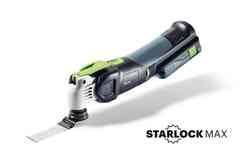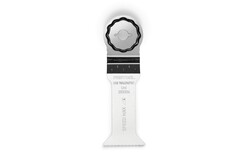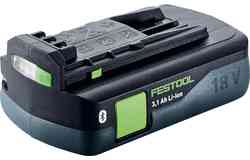Cutting a hole in gypsum plasterboard

Description

Tools/accessories
Alternative tools
Preparation/set-up
-
Before making any adjustments to the machine, the battery pack must be removed to prevent an accidental switch-on.

-
First of all, the positioning aid is attached to the machine and brought to the desired position. Furthermore, the mobile dust extractor is connected to the positioning aid, as plasterboard causes a lot of dust to build up during processing.

-
The appropriate saw blade is then fitted. In this application example, it is a universal saw blade. This is particularly suitable for plunge cuts due to its special shape. This capability is important when you want to cut a hole in a plasterboard wall.

-
Tip: If necessary, the plunge depth can also be preset with the adjusting screw on the positioning aid.

-
By using the Bluetooth® battery packs listed above, the mobile dust extractor is automatically switched on and off again. To do this, the battery pack must still be connected to the extractor.

-
Depending on the light fixture used, the hole size is marked on the plasterboard or drywall before cutting. In this case, the housing serves as a template.

Procedure
-
The VECTURO is aligned according to the scribe mark using the positioning aid. It is then slowly plunged into the plasterboard. Depending on the cut-out size, multiple plunges may be necessary.

-
This makes it easy to cut a precise hole in the gypsum plasterboard or drywall. The result is a perfectly fitted light fixture.

-
Our illustrated guides and work results are documented working steps that we have performed in practice. They are individual examples and do not guarantee or promise that users will obtain the same results. The results will depend on the user's experience and skill, as well as the material being used. Illustrated guides do not replace any Festool operating manuals and/or safety instructions. Liability for ensuring that the information, instructions and applications are free from content defects and defects of title, in particular with regard to the absence of defects, correctness, freedom from third party intellectual property rights and copyrights, completeness and fitness for purpose, is excluded. Claims for damages made by the user, regardless of their legal basis, are excluded. These liability exclusions are not applicable if the damage was intentional or caused by gross negligence, or in cases of statutory liability.
We cannot accept liability for damage resulting from defects.↑








